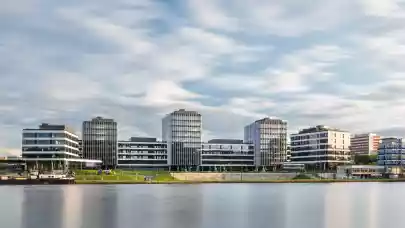
The Q4 2020 results of the RICS Global Commercial Property Monitor continue to point to a challenging backdrop across Europe. Both the office and retail sectors remain under significant pressure, with demand still falling sharply amid the difficult economic climate induced by the pandemic. On a brighter note, supported by structural tailwinds, the industrial sector continues to defy this downbeat overall assessment, prompting respondents to upgrade expectations for rental and capital value growth.
Occupier and investment sentiment indices still negative
The headline European Occupier and Investment Sentiment Indices both remained comfortably negative in Q4 2020. That said, sentiment is altogether more depressed on the occupier side, with the latest OSI reading coming in at -36 (vs -40 in Q3 2020).
At the same time, the ISI registered a figure of -17, slightly less negative than -23 in Q3 2020. At the country level, Bulgaria was among the four European markets (besides Cyprus, Switzerland and Italy) that display much weaker readings than the pan-European averages.
On the occupier market, the Czech Republic and Bulgaria have recorded the second and third highest surplus of supply over demand, respectively. The picture is a lot more positive on the investment market where the Czech Republic was one of only three countries (besides Denmark and Sweden) where demand outpaced supply.
Projections imply sharp pull-back in retail and office rents
Projections for rental growth over the next twelve months remain firmly negative for the retail sector, both across Europe in aggregate and in each national market covered. On average, respondents now foresee prime retail rents falling by 7% at the pan-European level, with secondary retail rents expected to decline by 12%. In both cases, expectations have been further downgraded compared with the Q3 2020 results. In terms of the office sector, survey participants envisage rents across secondary locations being particularly badly hit, with projections standing at -6%. For prime office space, expectations for the year ahead are somewhat more resilient, although projections still point to a 2% fall in rents across Europe in aggregate.
Industrial sector demand strengthens noticeably
As the industrial sector continues to be supported by an accelerated switch towards online spending, demand conditions stand in stark contrast to other portions of the market. Across Europe as a whole, a net balance of +22% of contributors cited an increase in occupier demand during Q4 (up from +10% previously). This has driven an improvement in rental growth prospects for industrial space, with prime industrial rents projected to rise by +3% over the coming twelve months (upwardly revised from +2% last quarter). Meanwhile, although rental growth expectations for secondary industrial space have not yet moved back into positive territory, the latest results did see projections move from -1% to zero.
Projections for rental growth across the CEE region match the European sentiment. Office and retail rents are expected to fall sharply in both prime and secondary locations across all markets. The picture is a lot more positive on the industrial market where none of the countries in the region expects a decrease in rental levels in primer locations. Expectations are more mixed in secondary locations where rental growth is only expected in Hungary and Poland.
Outlook for capital values mixed across alternatives
Aside from the retail sector, hotels present the weakest expectations for capital values over the year to come, as respondents envisage a 9% decline (unchanged from Q3 2020). At the same time, the outlook for values across the student housing sector is modestly negative, at -1%. By way of contrast, data centres (+3%), aged care facilities (+2%) and multifamily housing (+2%) all display positive expectations for capital values over the next year.
In CEE countries, capital value expectations are only positive across the board in primary locations. The picture is a lot more mixed in secondary locations.
Markets still in the downturn phase
Overall, 55% of European contributors sense that the market is still turning down, albeit this is slightly less than 63% last time. Poland and Hungary are the European countries with the second and fourth highest share of respondents saying that the market is in the downturn phase, respectively.



